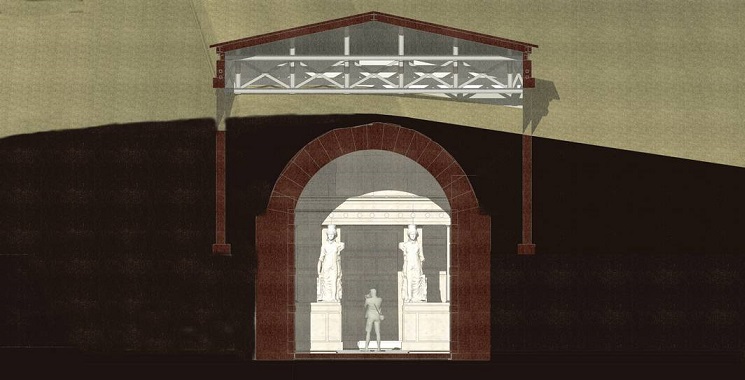
The majestic ancient Greek monument unearthed in Northern Greece in 2012 and known as the Amphipolis Tomb could open for visitors by the end of 2022, the Ministry of Culture and Sports said in an update.
Although initially planned to open to the public in early 2022, restoration plans were delayed first by pandemic-related restrictions and, more recently, by extreme weather conditions that hit the area in late June 2022, causing damage to external structures.
The Ministry’s priority is to protect the monument but also ensure the safety of visitors, the update explained.
Amphipolis tomb restoration plans
Construction experts evaluated the damages on site immediately after the area was hit by extreme weather and will again visit the restoration workfield the following week.
“The monument itself did not face any problems [, and the] work of shaping the slopes of the Tomb is reinforced with additional measures, in the hydraulic studies, to avoid similar problems from extreme weather in the future,” Culture and Sports Minister, Lina Mendoni, commented.
“When the project was designed, in 2018, the possible impact of the climate crisis, which is manifesting itself everywhere, was not taken into account,” she added.

The approved architectural proposal for the construction of the shell of the monument is based on the geometry and dimensions of the ancient façade, with absolutely minimal architectural features, the ministry states.
The aim is to achieve a harmonious presence in the space in relation to the monumental ensemble without reproducing morphological elements of the ancient shell while at the same time serving the functional needs of the monument in terms of viewing and accessibility.
A metal staircase and a small elevator for visitors with mobility issues will be constructed to allow access to the monument.
Secrets of a unique monument
The Amphipolis Tomb is the largest ancient burial mound ever discovered in Greece.
The ancient Macedonian tomb was discovered inside the Kasta mound near Amphipolis, Central Macedonia in northern Greece in 2012 and was first entered in August 2014. The first excavations at the mound in 1964 had previously exposed a perimeter wall, and further excavations in the 1970s uncovered other ancient remains.
The burial monument consists of three chambers, as seen in the digital reproduction images shared by the Greek Ministry of Culture and Sports. Thirteen stairs descend from the entrance to the chambers.
Majestic, well-preserved mosaics, frescoes, and statues of Sphinxes and Caryatids were discovered inside.
The remains of five unidentified persons were found buried in the monument. Anthropological tests could only reveal that the deceased were a sixty-year-old woman, two men aged 35 to 45, an infant, and another person who was cremated. The younger man showed signs of unhealed, possibly fatal wounds.
The opening of the Amphipolis Tomb to the public was first announced in 2017. Its restoration project is co-financed by EU funds.
See all the latest news from Greece and the world at Greekreporter.com. Contact our newsroom to report an update or send your story, photos and videos. Follow GR on Google News and subscribe here to our daily email!



